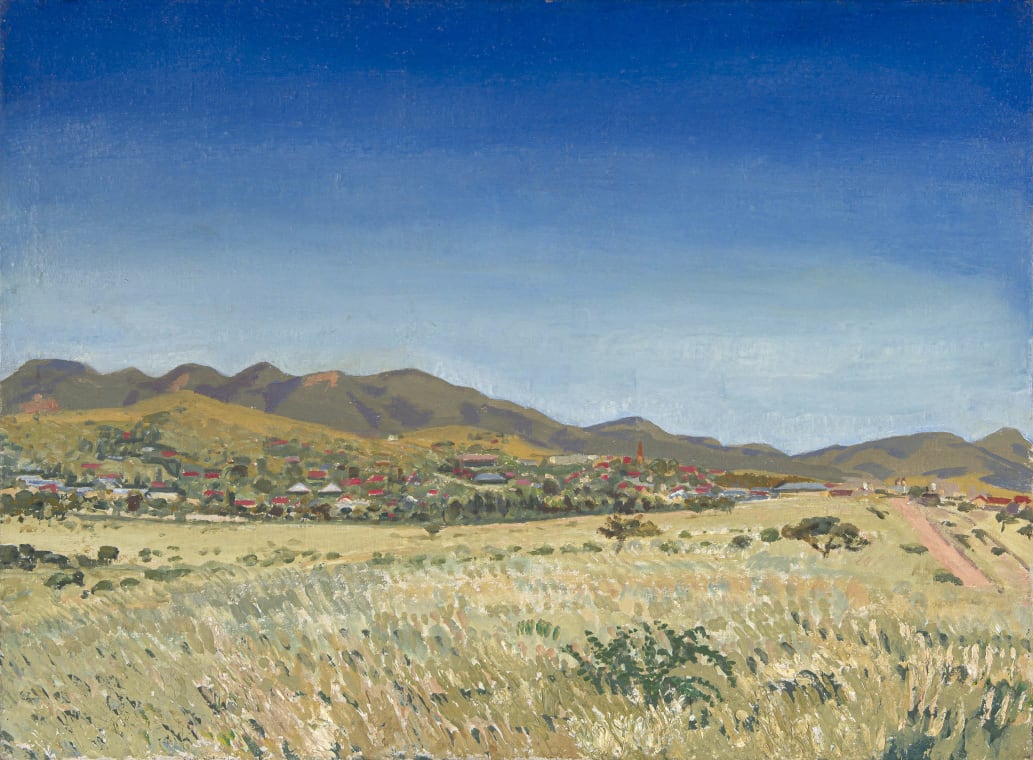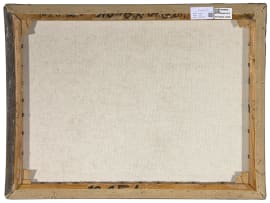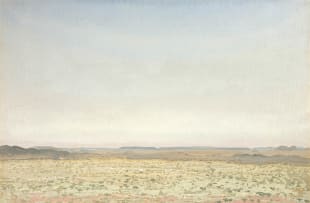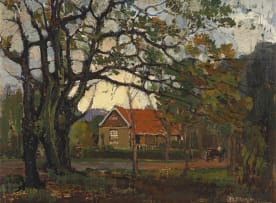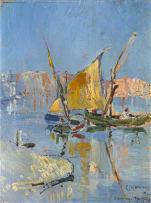Modern and Contemporary Art
Live Virtual Auction, 28 March 2023
Evening Sale
Incl. Buyer's Premium & VAT
About this Item
signed and numbered 'No 15K. A. Jentsch' on the stretcher on the reverse
Notes
In Jentsch's cosmic conception of Nature he conveys sublimity - the infinite - by means of subtle suggestion. He is a master of empty spaces which give a special spiritual quality to his work.1
1. Olga Levinson (1973) Adolph Jentsch, Cape Town: Human and Rousseau, page 68.
Adolph Jentsch was born in Dresden and studied at the Dresden Art Academy. He emigrated to Namibia in 1938 and became the most iconic and evocative painter of the Namibian landscape.
Jentsch devoted the rest of his career to painting the vast open spaces, endless horizons, still heat and blazing light of his surroundings. He was profoundly influenced by eastern philosophy, particularly Taoism, embracing harmony and serenity in contemplation of nature and worked en plein air. His watercolours are recognisable by their calligraphic mark making and restrained colour palette. Several of his large-scale oil paintings comprise more vigorous brush strokes and stronger colours.
Windhoek is an example of the latter.
Pierneef is the only other artist known to have painted a landscape in Windhoek circa 1924. The view in Jentsch's work is from the Eros hills, looking southwards towards the Auas mountains. The haze below the vivid cerulean sky is a typical climatic feature in the post-rainy season when the grass begins to turn yellow. Those familiar with Windhoek will recognise the German colonial era 'Tintenpalast' (Ink Palace) parliament building, the Lutheran Christuskirche, the Roman Catholic St. Marien Kathedrale and Elisabeth Hous (the first maternity home in Windhoek).
Provenance
Christie's, London, 18 April 2000, lot 98.
Private Collection, Cape Town.
